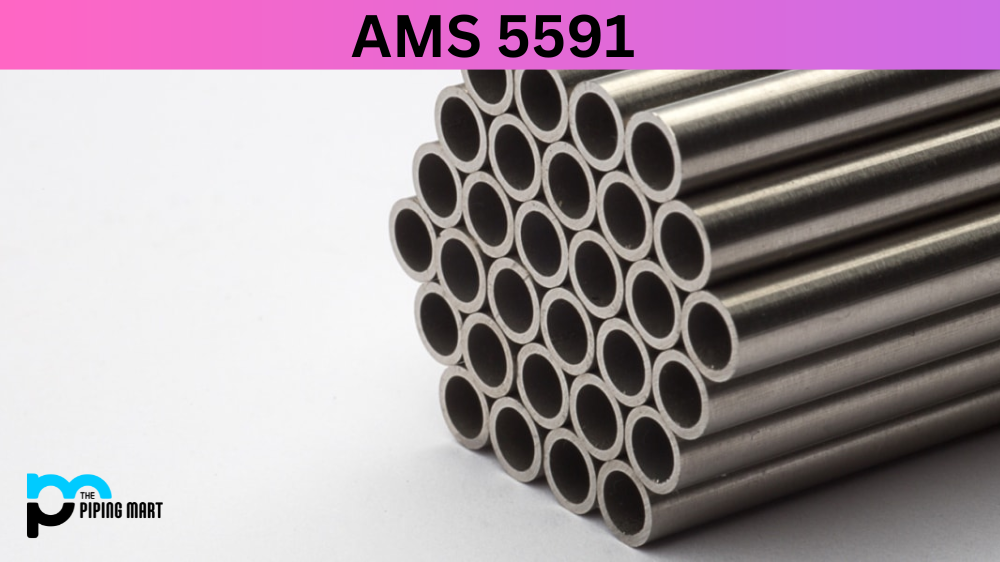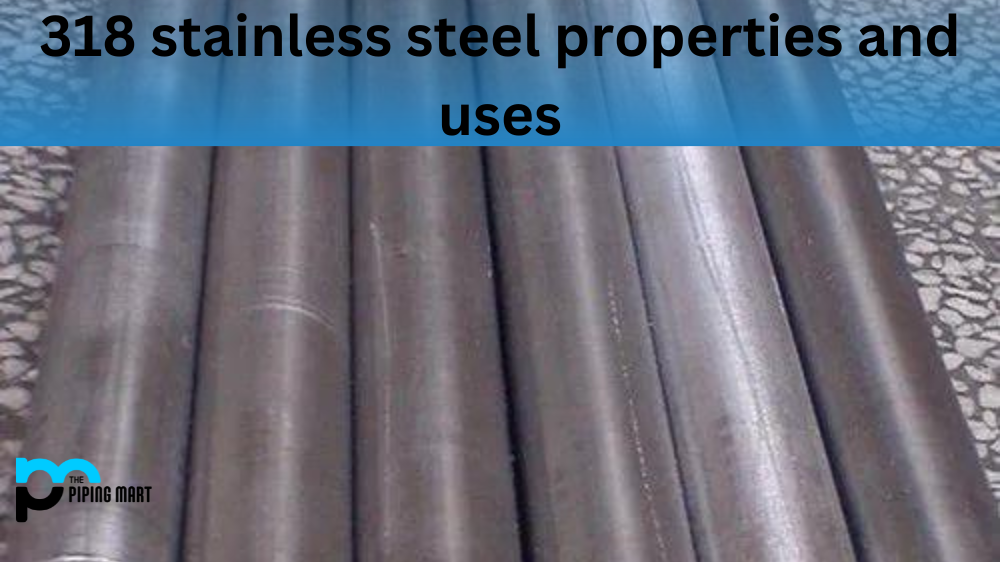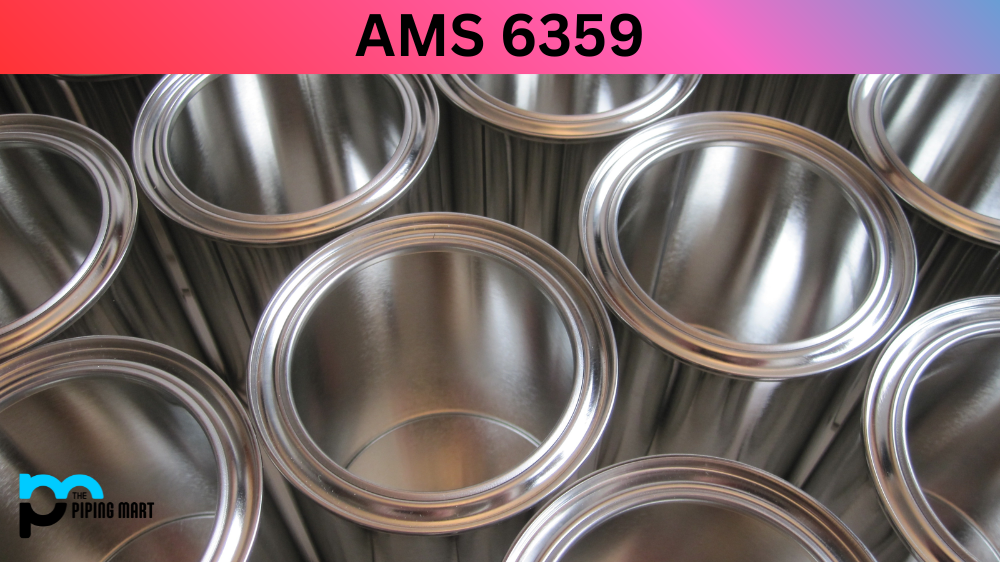The metalworking industry relies on numerous alloys for fabrication and production processes. One is AMS 5591, a high-strength alloy of nickel, chromium, and titanium. This alloy is ideal for applications that require mechanical and physical properties such as strength, durability, and resistance to corrosion. This article will dive into the composition, physical and mechanical properties, heat treatment, and applications of AMS 5591 material.
What is AMS 5591?
AMS 5591 (also known as 410 Stainless Steel) is a specification that dictates the requirements for nickel alloy bars and forgings used in aircraft engine components. This specification is considered a key standard in the aerospace industry because of its strict demands for quality and durability. To meet the requirements of AMS5591, alloy bars and forgings must undergo rigorous tests and inspections to ensure that they can withstand extreme temperatures, corrosion, and wear. This means that aircraft engineers can trust that the parts made from AMS 5591 sheet compliant materials will perform reliably and safely in even the harshest conditions. Overall, AMS5591 is essential in designing and manufacturing high-performance aerospace parts.
What Form Is AMS 5591 Available at Piping Mart?
- Nut
- Bar
- Bolt
- Pipe
- Screw
- Tubing
- Valves
- Washers
- Flanges
- Fasteners
- Electrodes
- Stud Bolts
- Sheet Plates
- Round Pipes
- Sheet Pipes
- Pipe Fittings
- Forged Fitting
- ERW Pipes
- Stud Bolts
AMS 5591 Composition
AMS 5591 plate is a nickel-base alloy with a blend of 50% nickel, 20% chromium, 12.5% cobalt, 5.5% molybdenum, 3% titanium, 3% columbium, and traces of aluminium and boron. When heat treated, it forms an intermetallic structure that significantly increases its resistance to high temperatures and corrosion.
| Grade | C | Mn | Si | P | S | Cr | Ni | |
|---|---|---|---|---|---|---|---|---|
| AMS 5591 | min. max. |
– 0.15 |
– 1 |
– 1 |
– 0.04 |
– 0.03 |
11.5 13.5 |
0.75 |
AMS 5591 Physical Properties
AMS 5591 wire has remarkable physical properties that make it excellent for high-stress applications. It has a high melting point of 1390°C (2534°F), making it resistant to thermal shock and deformation at high temperatures. The alloy also offers high strength, flexibility, and toughness, making it ideal for harsh environments.
| Grade | Density (kg/m3) | Elastic Modulus (GPa) | Mean Coefficient of Thermal Expansion (μm/m/°C) | Thermal Conductivity (W/m.K) | Specific Heat 0-100 °C (J/kg.K) | Electrical Resistivity (nΩ.m) | |||
|---|---|---|---|---|---|---|---|---|---|
| 0-100 °C | 0-315 °C | 0-538 °C | at 100 °C | at 500 °C | |||||
| 5591 | 7800 | 200 | 9.9 | 11 | 11.5 | 24.9 | 28.7 | 460 | 570 |
AMS 5591 Mechanical Properties
AMS 5591 bars exhibits excellent mechanical properties with a tensile strength of 155ksi and a yield strength of 90ksi. The alloy can resist creep and oxidation at temperatures up to 815°C (1500°F). AMS 5591 also possesses good fatigue strength, making it useful for repetitive loading applications.
| Tempering Temperature (°C) | Tensile Strength (MPa) | Yield Strength 0.2% Proof (MPa) | Elongation (% in 50 mm) | Hardness Brinell (HB) | Impact Charpy V (J) |
|---|---|---|---|---|---|
| Annealed * | 480 min | 275 min | 16 min | – | – |
| 204 | 1475 | 1005 | 11 | 400 | 30 |
| 316 | 1470 | 961 | 18 | 400 | 36 |
| 427 | 1340 | 920 | 18.5 | 405 | # |
| 538 | 985 | 730 | 16 | 321 | # |
| 593 | 870 | 675 | 20 | 255 | 39 |
| 650 | 300 | 270 | 29.5 | 225 | 80 |
AMS 5591 Equivalents
| Grade | UNS No | Old British | Euronorm | Swedish SS | Japanese JIS | ||
|---|---|---|---|---|---|---|---|
| BS | En | No | Name | ||||
| AMS 5591 | S41000 | 410S21 | 56A | 1.4006 | X12Cr13 | 2302 | SUS 410 |
AMS 5591 Uses
One of the common uses for AMS 5591 material is in the aerospace and defence industries. It fabricates components such as turbine components, engine exhaust systems, afterburners, and heat exchangers. AMS 5591 is also useful in the chemical processing, petroleum, and power generation industries for manufacturing components that require high toughness and resistance to high temperatures and corrosion.
AMS 5591 Hardness
AMS 5591 has a hardness level of 28 HRC when heat treated. The intermetallic structure that results from this treatment further increases its hardness, making it ideal for use in high-stress environments.
AMS 5591 Heat Treatment
AMS 5591 undergoes heat treatment for enhanced physical and mechanical properties. The alloy is heated to a temperature of 1150°C (2102°F) followed by a controlled cooling process that results in the intermetallic structure that makes it resistant to high-temperature environments.
Conclusion
AMS 5591 material is an essential alloy for high-stress, high-temperature applications. It has a wide range of mechanical and physical properties that make it useful in industries such as defence, aerospace, and petrochemicals. Knowing more about AMS 5591 and its properties can guide you in selecting the appropriate alloy for your specific application requirements.

Meet Bhavesh, a seasoned blogger with a wealth of knowledge and experience. From metal products manufacturing to retail, Bhavesh has a diverse background in various industries and is dedicated to sharing his insights and expertise with readers.




